From designing Qantas PJs to French farmhouses, we visit Martin Grant at home in the South of France ahead of his new exhibition
Featuring over 600 designs, a major career retrospective dedicated to the legendary Australian creative finally comes to the NGV.
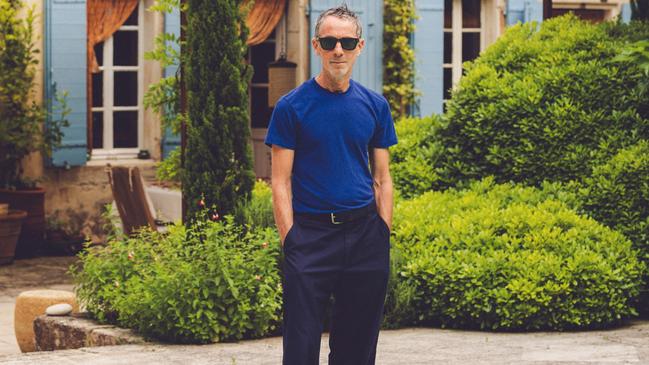
It’s taken a few attempts to fix on a talk time with Melbourne’s long-lost fashion son Martin Grant, who established his namesake label at 26 in 1990s Paris with nothing but a determination to test his talent in design’s most contested territory. But at the end of a “rush, rush” working week in Paris, Grant beams in from his South of France bolthole to expand on the National Gallery of Victoria’s (NGV) latest announcement that he has gifted more than 200 pieces from his personal archive to their collection.
“We burnt the candle at both ends last night,” Grant says, ’fessing up to “feeling a little brain dead and croaky”, after the first evening’s “ease” into a month-long stay in his centuries-old mas – a classic Provençal farmhouse bought with his partner (in life and work) Mustapha Khaddar during the great global containment of covid.
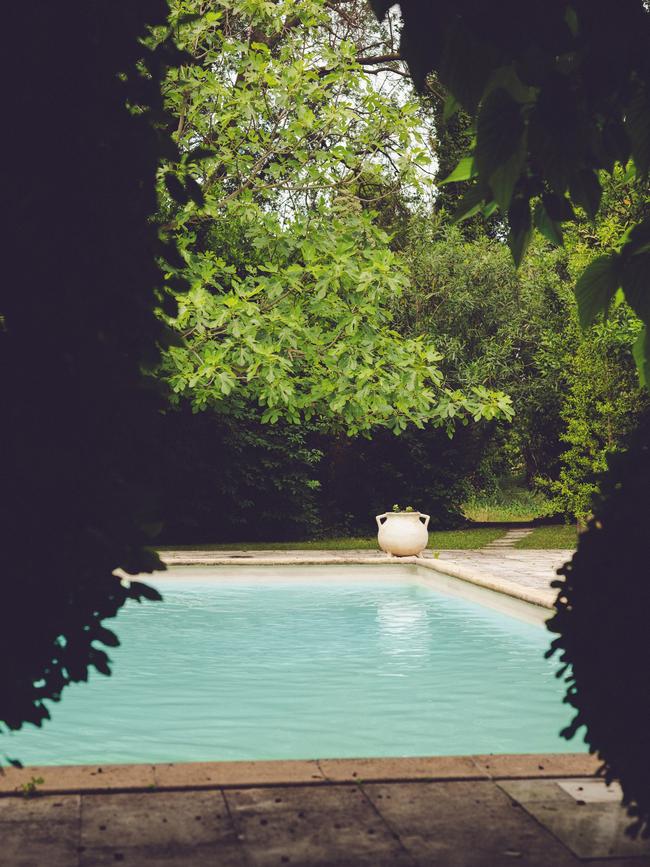
“I don’t know if it’s acceptable to say this, but I loved that whole period; nobody on the streets, everything sharpening into perspective,” and the dream seeding of long summers spent in what English psychiatrist and author Dr Sue Stuart-Smith calls the space-time medicine of the garden. For Khaddar and Grant, covid clawed back agency in a life lost to the endless cycles of fashion; the seasonal push and purge that Grant likens to farming “because you have no choice other than to deal with winter, spring and summer, over and over”.
With covid allowing time and mind to drift, Grant says he disappeared down the digital rabbit-hole of realty in Southern France, and surfaced in the sunbaked city of Arles, once a provincial capital of the Roman Empire, where van Gogh’s ghost still looms large and pink flamingoes colour the skies in flight to The Camargue.
The locals can be tricky when it comes to new residents, as Grant discovered upon first inquiring about the property. “Oh, there’s just way too much work to be done there, you wouldn’t want it,” came the dissuasive words from the agent.
Not exactly the hard sell, notes Grant with supposition that it’s either weird reverse psychology or a form of regional protectionism against ruinous outliers. Either way it fanned the flames of interest and a little fury. “Well, bugger that!” says Grant with a versatile profanity that proves more than 30 years of Paris living cannot expunge his Australian dislike for preferential treatment and pomposity. “Is it for sale or not?”
He remembers the repressed annoyance of the realtor’s “oui”, a fast train ride to Arles for the up-close inspection and a design friend’s interrogation of the property’s structural integrity and value. “Sold!”
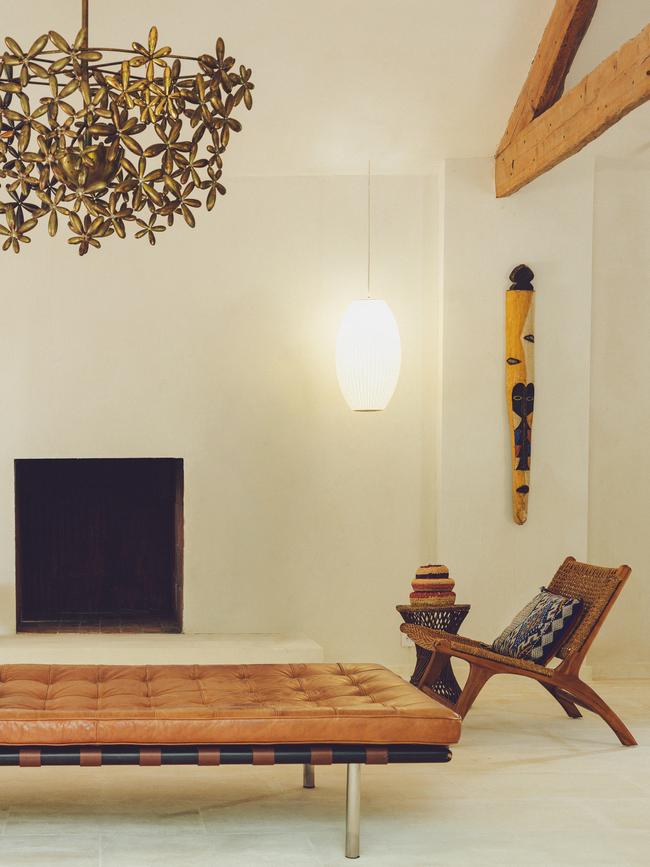
“Yes, I’m onto my morning whisky,” says Grant, who lifts his left hand aloft to reveal a glass of black tea – bag still dangling in its depths – while panning his phone with the right to reveal the enveloping mas vernacular of local sandstone, terracotta tiles and wooden beams. “It hadn’t been lived in for years, never done up and was just left abandoned. So, we started slowly fixing things up”, freezing the interior’s farmhouse identity in a forgiving chalky white that made discordant elements disappear while also allowing the decorative influx of a patinated modernity.
“It’s finally starting to look like something,” he says with a walk to a window framing an outer saturation of green that tells of a high-water table and wet summers that haven’t served his fruit trees well. “This is one of the hottest areas in France, surrounded by UNESCO-protected fields growing the caviar equivalent of hay.” Their grassy notes have seeded inside where woven rush seats and a Mies van der Rohe > chaise bring to mind the couple’s Paris apartment play of midcentury furnishings, flea market finds and fine art by such collectable contemporary gal-pals as Australian artists Rosslynd Piggott and Polly Borland. It’s perhaps a little more relaxed and contextually raw than the 17th-century rooms of home in Le Haut Marais, suggests Grant, who talks of barrelling Mistral winds determining the south-facing alignment of Arles’s typically blocky farmhouses. “Nothing fancy,” he declares.

Grant says the home’s many different levels are all “a bit higgledy-piggledy” but the passages have an errant charm that mirrors the meanderings of the city of Arles, now touted as the next big art destination since Swiss heiress Maja Hoffmann’s philanthropic Luma Foundation reimagined the old rail yard into the sprawling arts complex, Parc des Ateliers at Luma Arles. At its centre glows an aluminium twist of a tower by architect Frank Gehry whose genius, it assumes, will bring economic uplift (otherwise known as the Bilbao effect) to the Rhône River city.
Build it and they will come, continues the banter around hyper-inflated architecture, the new currents of cultural tourism and the transformational impact of benefactions, which circles discussion back to the NGV and Grant’s gift of nearly three decades of his resolutely consistent oeuvre. The NGV’s senior curator of fashion and textiles Katie Somerville says that it has ultimately built into a retrospective of his work to be exhibited at The Ian Potter Centre: NGV Australia.
Opening Friday March 28, the comprehensive retrospective covers the full evolution of Grant's decades-long career in the fashion industry. The exhibition is the result of what he calls one giant covid clean-out.
“Covid was actually a fantastic catalyst for change for me,” he reflects. “When everything closed down in Paris, all our staff scattered across France. It was a chance to take stock. I’d been sending my archives out to the suburbs for over 25 years without ever looking at them. This was the chance to bring them back, sort them out and decide what to do with them.”
In gifting the archive to the NGV, which had already been collecting his work, it solidified the realisation of an exhibition dedicated to the artist.
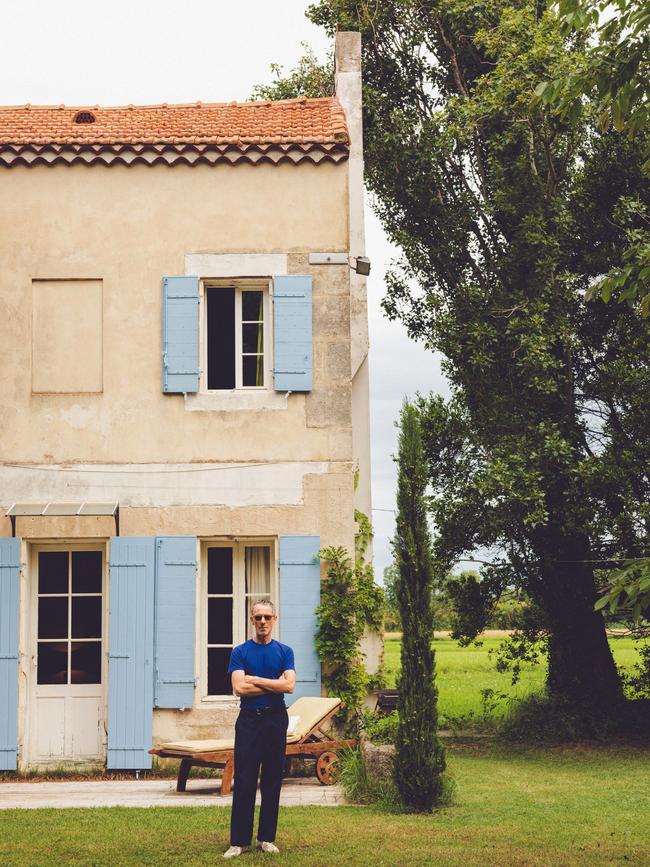
To put Grant’s design span in dog years, an equivalent measure of survival in the fashion industry, it’s about two centuries of hard slog by a fiercely independent but companiable breed not dissimilar to a tough little terrier. Grant laughs appreciatively at the comparison and the coincidence – he once owned a wire-haired terrier named Muttley after the cynical cartoon canine who suffered the overwrought ambitions of his master Dick Dastardly.
Mention of the dog’s wheezy snicker prompts a mime-off and memories of growing up in the changing southeastern suburbs of 1970s Melbourne, where his “intellectual” parents Bev and Peter Grant brought up four children in a house designed by modernist architect Robin Boyd, then the national voice of good design.
Grant admits to youthful ignorance about inhabiting a “Boyd”, his teenage riposte to the architect’s structural rigour and his parent’s rightful blend of modernist artefacts being to fill his bedroom with “junk-shop shit”.
“We were rarely allowed to watch television, save for a little Doctor Who, and had to entertain ourselves,” says Grant of immersing his young self in books, the bush, music and a forensic study of his mother’s Vogue sewing patterns, which produced a bold reinterpretation of Yves Saint Laurent’s Mondrian shift dress more suited to suburban Blackburn.

What precocious infringement, it suggests to the now 58-year-old wunderkind, who could never shirk the descriptor after designing his first ready-to-wear collection at 16, making the pages of Australian Vogue at 18 and garnering the Cointreau Young Designer of the Year title at 20. “Where do you go after that?”, he rhetorically asks, accounting for an ensuing degree in sculpture before dispatching to London with creative burnout. “I don’t even remember if I had a return ticket booked. Deep down I knew that I didn’t really want to come back.”
But survival in end-of-millennium Europe meant falling back into “the cauldron of fashion”, recalls Grant, who still emanates the obstinate youthfulness of Peter Pan, a kid in search of his own shadow, never the silhouette of others. Somerville, though, wonders about the seep of Christian Dior’s decadent post-war New Look influence, which Grant may have first seen in his mother’s fashion books and then fleshed out in kindergarten paintings.
“I kid you not, his mum has still got them,” says Somerville of horizontal format paper works featuring stick princesses swallowed by their skirts. “Oh, I could do a whole section just looking at his play with volumes, because to me that is one of the most important aspects of his work. Not only the sort of two-part tailoring that approximates a suit, but the coat; the coat deserves a whole space dedicated to it.”
Somerville calls it “early days” on ordering four floors of exhibit around Grant’s taxonomy of tailoring – always measured with a hands-on lay and play of the dressmaker’s toile – but draws a rough line between his atelier’s start in the Marais in early 1990s Paris and a crowning collection for autumn/winter 2019-2020.
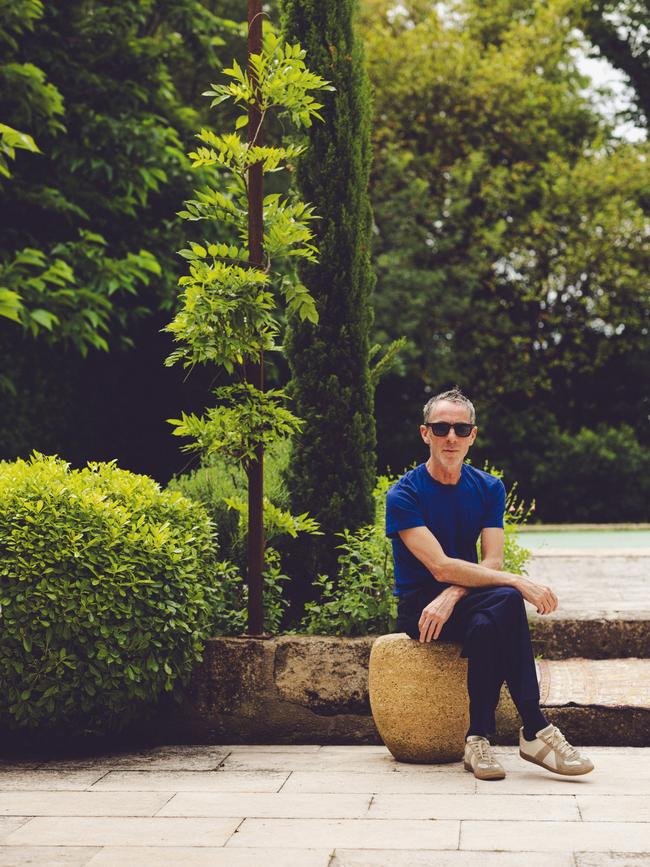
His meteoric rise through the Melbourne fashion scene in the free-ranging 1980s has been well mapped and mined. “Dress as though your life depends on it or don’t bother,” said performance artist and one-man-canvas Leigh Bowery and every second “door-bitch” guarding the denizens of the night, remembers Grant who, though under the legal age for entry, gained access to inner-sanctum Inflation by sporting his own cool garb and befriending designer and erstwhile club cashier, Desbina Collins.
Collins corralled the young talent into the collective creativity of Stalbridge Chambers, then home to the seminal Fashion Design Council (FDC), who featured Grant’s self-taught tailoring in their first independent fashion shows. The heritage tenancy also introduced Grant to a coterie of contemporary art stars and outré creatives, including milliner Tamasine Dale who continues to interpret his elementally feminine forms in sculpted hats. Christine Barro, another Inflation habitué who then helmed the accessories section at Georges department store and now delivers Grant’s seasonal collections in her namesake Collins Street boutique, recalls divining “something other” in Grant’s attire and the attitude of the “fabulous young things” he dressed.
“Martin’s designs instantly conferred a presence,” she says. “I remember checking into a Qantas flight after his uniforms were first issued to staff [in 2016] and noting how they conferred a pride and professionalism. He knows his DNA and never wavers from it, rather works it with an evolutionist’s eye.”
Case in point is Grant’s development of the Qantas pyjamas, recently refreshed in readiness for the Perth-to-Paris route (launching July 12) and the long-haul passenger who believes comfort and effortless cool can be happy bedfellows.

Such futureproofing of fashion, according to Somerville, began with a foundation of strong female role models and a first-hand knowledge of how women like to wear, keep and acquire fashion. As to the question of an inherent “Australian-ness”, she believes Grant’s designs express it without an overt geo-specificity but rather an honesty that comes from living on the periphery and pushing through the weight of French history, or what Grant calls “the cult of the dead designer”.
His mindfulness has never been meretricious, even though he could have been as big as he wanted, she notes with reference to Grant’s design of the private label collection for New York department store Barney’s and his declining the head design position at fashion house Céline in 2003. But staying accountably small, in control, desirably discreet and clear of the vicissitudes of fame is Grant’s unwavering stand. “He’s always been very clear in terms of his career, where he’s at, what his values are,” Somerville adds. “No one garment from a single collection is designed to be a standout star.” But countless garments have stood out on the stars, including a constellation of royals and their red-carpet counterparts, including Tilda Swinton, Cate Blanchett, Isabelle Hupert, Juliette Binoche, Emma Stone and Lee Radziwill.

“Ah Lee,” says Grant, dropping to his farmhouse floor to pick up a framed portrait recently sent to him by French fashion photographer Gilles Bensimon, who snapped the socialite one summer’s day on the yacht Grant chartered annually to spirit them away to Jacqueline de Ribes’s holiday hideaway in Corsica. “I mean how many people look that glamorous in a headscarf?”
His introduction to the younger sister of the former first lady Jacqueline Kennedy Onassis was, as Grant recalls, brokered by then US Vogue fashion editor André Leon Talley who sent Grant into fashion orbit after organising an ad-hoc parade in the designer’s “matchbox” Marais boutique and calling in favours from the supermodel likes of Naomi Campbell. “André was big, loud and larger than life and he brought in every major journalist from every major magazine,” says Grant of the extravagant, generous and erudite fashion titan who led Radziwill to his Paris atelier, shifting her circumspection on his youth to an enduring patronage and praise. “For me, his talent lies in making coats and jackets that never feel trendy because he understands and respects line, proportion and simplicity,” Radziwill told The New York Times.
“Hell, I was just this boy from Blackburn, and we had nothing in common, other than our size and height, because she came from this whole other world,” Grant says of Radziwill’s roll call of friends both royal and rock’n’roll. “But I think it just suited her to have somebody with whom she could be honest and totally laid bare.”
Someone who never imposed a narrative, needed a compliment, but just let a woman wear herself with confidence.
Martin Grant is on at The Ian Potter Centre: NGV Australia from March 28.


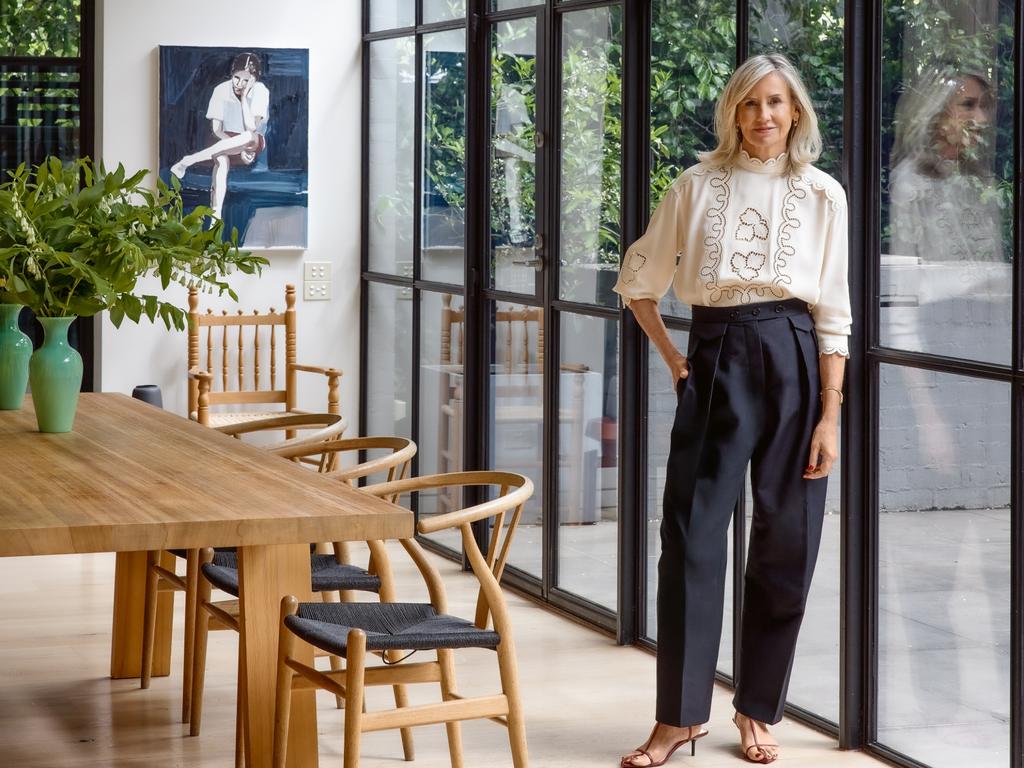
To join the conversation, please log in. Don't have an account? Register
Join the conversation, you are commenting as Logout